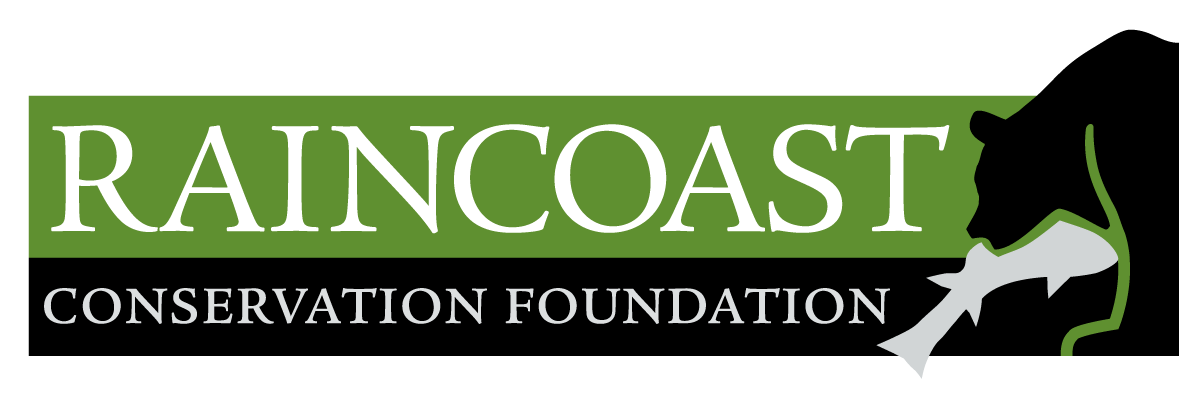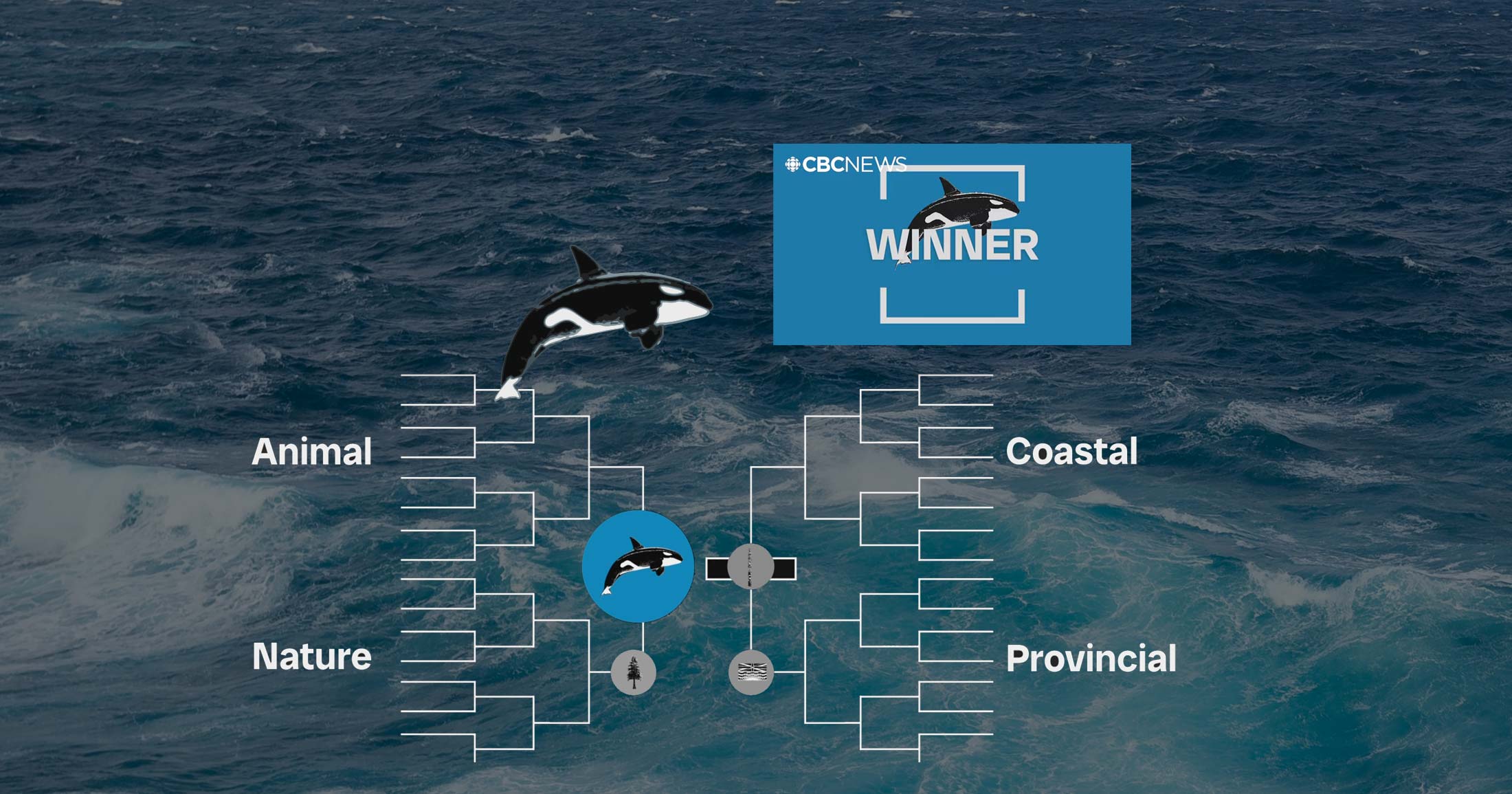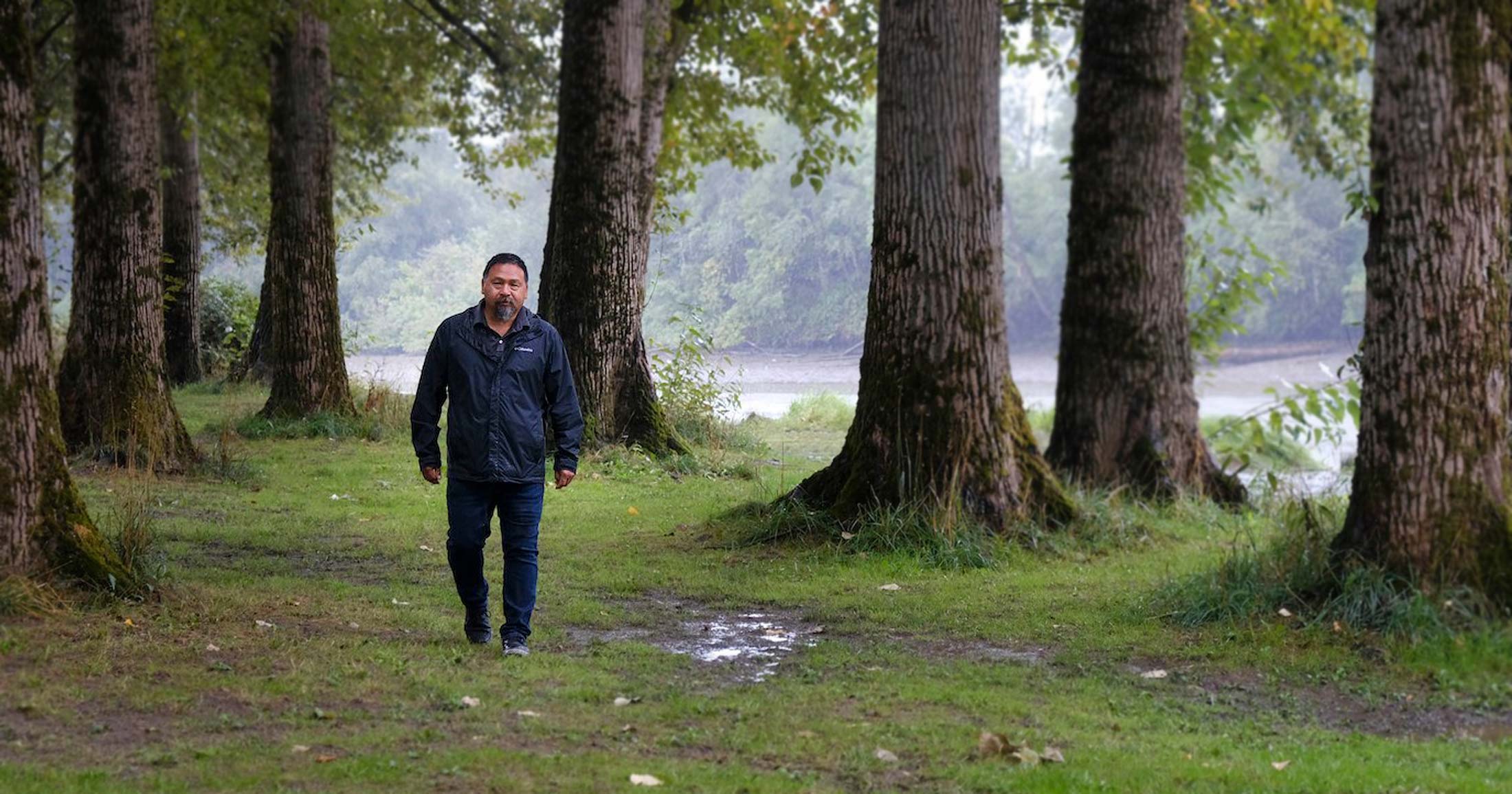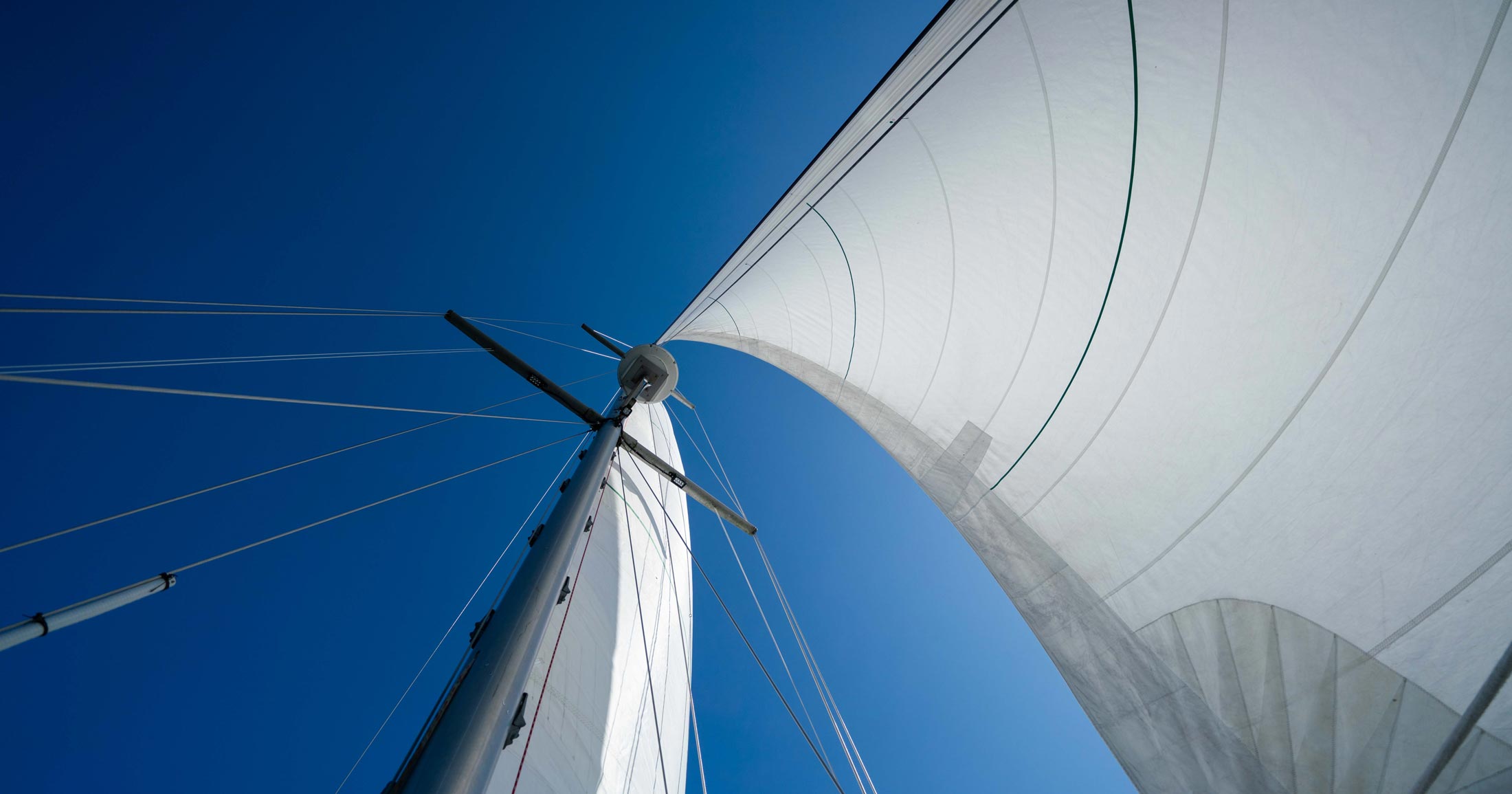Let’s talk about why it’s ironic that the orca was just chosen as BC’s Best Symbol
This emblem of our province needs our help.
This July and August, the CBC’s Justin McElroy led a quest to identify BC’s most iconic symbol. The Search for BC’s Best Symbol featured 64 entries, including animals, landmarks and food, placed in a bracket and voted on by the public. With over 500,000 votes cast, and defeating the totem pole in the grand finale…the killer whale emerged victorious as BC’s Best Symbol.
Are we really surprised? While it faced stiff competition in the animal quadrant from the raven (round 1), the sea otter (round 2), the Steller’s jay (round 3) and the spirit bear (round 4), and beat out the Western red cedar in the semi-final, the killer whale is truly an icon that has long been emblematic of British Columbia.
Perhaps it’s their striking black-and-white colouration, the tight family bonds they form, or their inextricable link to another BC icon, salmon; killer whales have long captured the imagination of people across BC and beyond. From excitedly standing on the deck of the ferry hoping to catch a glimpse of a pod, to walking on the shore of a Gulf Island and watching these endlessly fascinating whales swim by, to seeing them frequently featured in Northwest Coast Indigenous art – everyone has a connection to killer whales.
While we at Raincoast wholeheartedly agree with the win and are glad of people’s positive perception, we couldn’t help but have mixed feelings about this result. It is encouraging to see killer whales recognized as BC’s best symbol at a time when they need more visibility than ever, but the reality of the killer whale’s place in BC is troubling.
Killer whales in peril
BC is home to multiple populations of killer whales: the salmon-eating resident killer whales, the marine mammal-eating Bigg’s killer whales, and the rarely encountered offshores. Arguably, the best known population is the Southern Resident killer whales, whose critical habitat includes the Salish Sea. But life as an icon is not all it’s cracked up to be.
The Southern Residents are critically endangered. Now numbering only 73 individuals (2024 census), they have long faced a slew of threats that have steadily reduced their numbers and brought them to the brink of extinction. New and stronger government actions to reduce the threats these whales face are urgently needed. Limited access to their primary prey, Chinook salmon, and noisy and polluted waters, have brought us closer to a world without the Southern Residents.
The Southern Resident killer whales are not replaceable. Like humans, they have a unique culture. Their distinctive dialects, social structures and behaviours set them apart from other populations. For generations, their presence in specific coastal areas has been tied to the seasonal migrations of Chinook salmon that sustain them, becoming a common sight in much of southern BC.
“If the killer whale is to be more than just a symbol, we must match our admiration with action. Protecting salmon, reducing noise, and safeguarding their habitat are the only ways to ensure that this emblem of BC has a future.”
Dr. Valeria Vergara, Raincoast Cetacean Conservation Research Program Director
Recognizing the killer whale as BC’s best symbol isn’t going to save them from extinction. But if everyone who voted for these majestic predators, were to add their voice to calls for real change, we just might be able to continue celebrating them for generations to come, before this iconic symbol becomes nothing but a memory.
Read more
Independent Science Panel on SRKW Recovery (2025). Strengthening recovery actions for Southern Resident killer whales. https://doi.org/10.70766/32.7300
You can help
Raincoast’s in-house scientists, collaborating graduate students, postdoctoral fellows, and professors make us unique among conservation groups. We work with First Nations, academic institutions, government, and other NGOs to build support and inform decisions that protect aquatic and terrestrial ecosystems, and the wildlife that depend on them. We conduct ethically applied, process-oriented, and hypothesis-driven research that has immediate and relevant utility for conservation deliberations and the collective body of scientific knowledge.
We investigate to understand coastal species and processes. We inform by bringing science to decision-makers and communities. We inspire action to protect wildlife and wildlife habitats.










